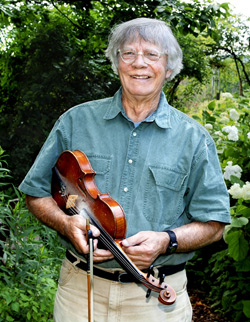Country dancing
Enlarge text Shrink textContra dance (also contradance, contra-dance and other variant spellings) is a form of folk dancing made up of long lines of couples. It has mixed origins from English country dance, Scottish country dance, and French dance styles in the 17th century. Sometimes described as New England folk dance or Appalachian folk dance, contra dances can be found around the world, but are most common in the United States (periodically held in nearly every state), Canada, and other Anglophone countries. A contra dance event is a social dance that one can attend without a partner. The dancers form couples, and the couples form sets of two couples in long lines starting from the stage and going down the length of the dance hall. Throughout the course of a dance, couples progress up and down these lines, dancing with each other couple in the line. The dance is led by a caller who teaches the sequence of moves, called "figures," in the dance before the music starts. In a single dance, a caller may include anywhere from six to twelve figures, which are repeated as couples progress up and down the lines. Each time through the dance takes 64 beats, after which the pattern is repeated. The essence of the dance is in following the pattern with your set and your line; since there is no required footwork, many people find contra dance easier to learn than other forms of social dancing. Almost all contra dances are danced to live music. The music played includes, but is not limited to, Irish, Scottish, old-time, bluegrass and French-Canadian folk tunes. The fiddle is considered the core instrument, though other stringed instruments can be used, such as the guitar, banjo, bass and mandolin, as well as the piano, accordion, flute, clarinet and more. Techno contra dances are done to techno music, typically accompanied by DJ lighting. Music in a dance can consist of a single tune or a medley of tunes, and key changes during the course of a dance are common. Many callers and bands perform for local contra dances, and some are hired to play for dances around the U.S. and Canada. Many dancers travel regionally (or even nationally) to contra dance weekends and week-long contra dance camps, where they can expect to find other dedicated and skilled dancers, callers, and bands.
Read more on Wikipedia >
 Topic
Topic





